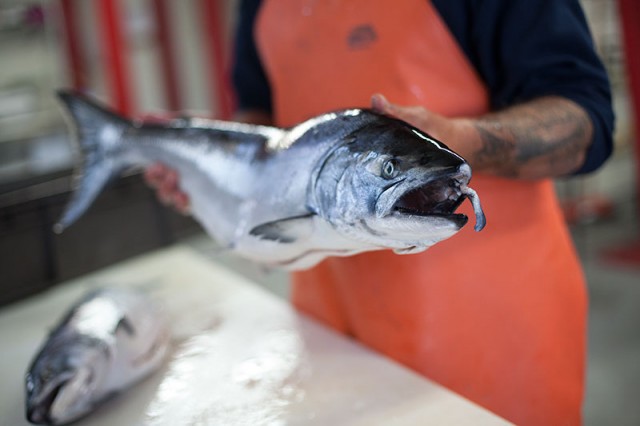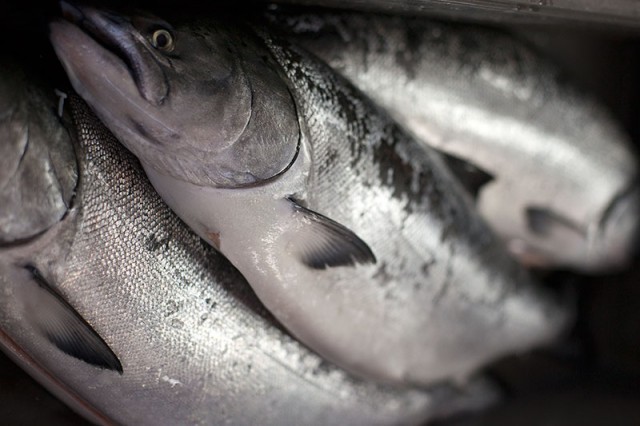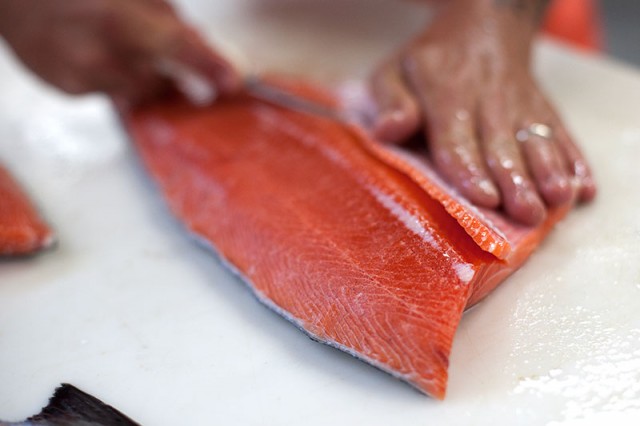
The commercial fishing season for salmon off our piece of the Northern California coast opened last Thursday. Boats are starting to come into port with loads of the big fish — called king salmon by some, chinook by others, and Oncorhynchus tshawytscha by the truly geeky.
Alerted to the arrival of boats at San Francisco's Pier 45 on Tuesday, photographer Mark Andrew Boyer went to check out the scene. He encountered some beautiful fish and a couple of the best people in the Bay Area to talk about them, fisherman Larry Collins and Kenny Belov, a restaurateur and wholesaler of sustainable fish.
The fish being landed now are so beautiful, the sight of them is so intoxicating, that it's easy to forget how fragile their continued existence is.
Most of the salmon the commercial fleet is bringing in by line and hook are Sacramento River fall-run chinook. Unlike most other California salmon, the Sacramento River fish have not been listed as endangered or threatened under federal and state law. But along with other California salmon, their survival is a subject of concern. A crash in the Sacramento fall-run population led to a two-year shutdown of the fish in 2008 and 2009 and severe restrictions on catching them in 2010. Their numbers, hugely dependent on the production of juvenile salmon at Central Valley hatcheries, have recovered since then, and a big harvest by recent standards is expected this year.
But the drought is casting a shadow over the future of the fish and those who depend on them for a living. This year, federal and state hatchery managers are trucking 30 million baby salmon from hatcheries to the Delta or all the way to San Francisco Bay — the only way, they say, that any of the young fish would ever reach the ocean this year.

